All about Moire fabric
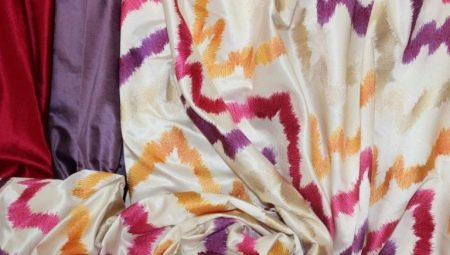
Together with brocade, silk, satin and velvet, moire takes its rightful place among the most luxurious and rich materials. This is one of the most beautiful fabrics, the distinctive features of which are exquisite shimmer and unobtrusive patterns reminiscent of holography. Such a canvas has been popular for more than one century, it was he who was sung in their literary and artistic works by famous poets and artists.
General description and history
Moire fabric is well known to people who are keen on the work of artists of the period from the 18th to the beginning of the 20th centuries. Women and men dressed in outfits made of this material can be seen in portraits of members of the royal family, aristocrats, military leaders and other influential people. In the paintings they are depicted in iridescent dresses and camisoles made of expensive fabric with obligatory moire ribbons for orders. Moire was popular until the 1917 revolution; clothes made from such fabric have always served as a symbol of high status, financial wealth and exceptionally sophisticated taste.

Little is known about the origin of the fabric. According to some assumptions, the technique of making silk fabrics with a light optical effect first originated in the East, but very quickly took root in the countries of the Old World.
In the old days this shimmering canvas was called "obyar", translated from Persian "ab" means water. Indeed, the moiré fabric created the visual effect of a flowing stream of water.
Moire was brought to Russia by Peter I. At first, the material was used exclusively for sewing award ribbons. But its beauty was appreciated, and soon women’s and men’s outfits, as well as luxurious decor items, were sewn from the fabric. In the notes of V. Vereshchagin, you can find a mention of the fact that moire dresses began to be worn in 1806.The fashion for moire clothing continued until the outbreak of the First World War.
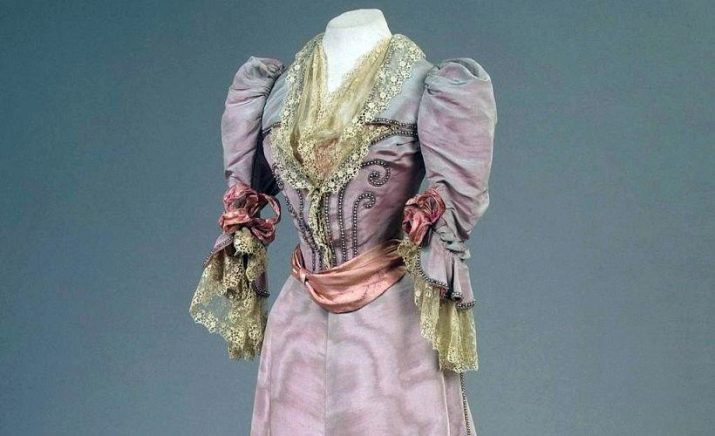
The mention of an unusual fabric is found in many literary works. Thus, the poet A. Bely praised the beauty of women in clothes made of this flowing material. And the famous Igor Severyanin called women in moire dresses "exquisite and aesthetic."
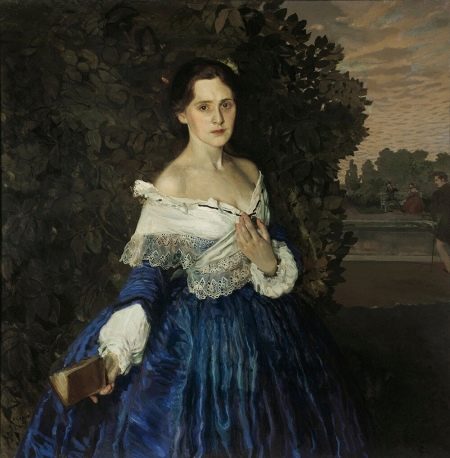
Initially, the fabric was made of uniform silk or with the addition of cotton threads. With the development of the textile industry, synthetic fibers of viscose, lavsan and acetate began to be included in the fabric. These additives made the material more elastic and resistant to wear and tear.
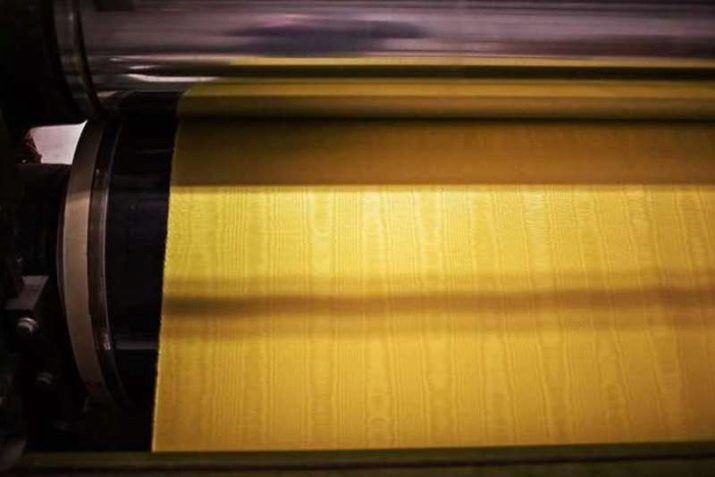
The manufacture of any moire fabrics using natural silk, silk yarn and chemical threads is carried out in strict accordance with the accepted GOST 28253-89. This regulation states that the main technical and operational parameters of the fabric - the change in the length of the threads after wet processing, crease resistance, tensile load, elongation at break, and others, must exactly comply with the approved standards. For example, the abrasion resistance of a fabric made from natural silk threads should be at least 200 cycles, for a fabric based on synthetic fibers - 1000 cycles.
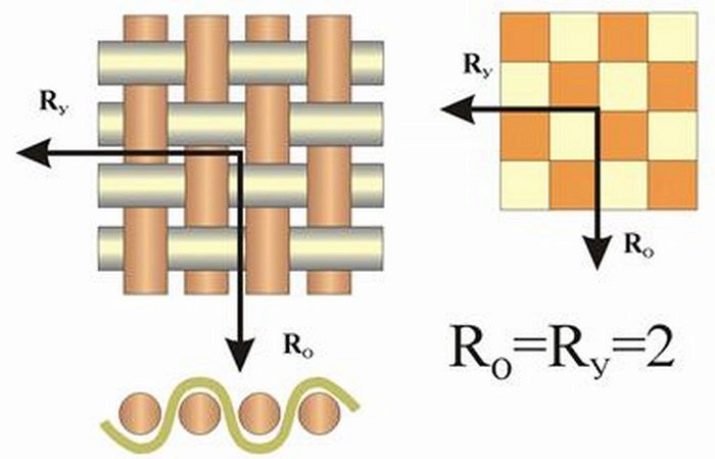
The basis of the production of moire fabric is calendering. This technique involves plain weaving of homogeneous or mixed yarns, followed by rolling the finished fabric through hot rollers (calenders). With this treatment, the threads move, squeeze and take the opposite direction - this is what creates the visual effect of glare on the fabric.
From some angles, it may seem that the patterns on the surface of the matter are a bit like a longitudinal section of wood, and look like a holographic picture.

A less common way to replace the weave of fibers. In this case, during the creation of the fabric, the types of weaving are periodically alternated in a given order. All this allows you to create a volumetric repeating pattern with a pronounced shimmer. And, finally, you can resort to the multilayer technique - several layers of thin mesh material are placed on top of each other in a chaotic manner. Due to the shift of the threads, an unusual pattern is formed, it is he who gives the finished canvas a unique shimmer and perfect smoothness.
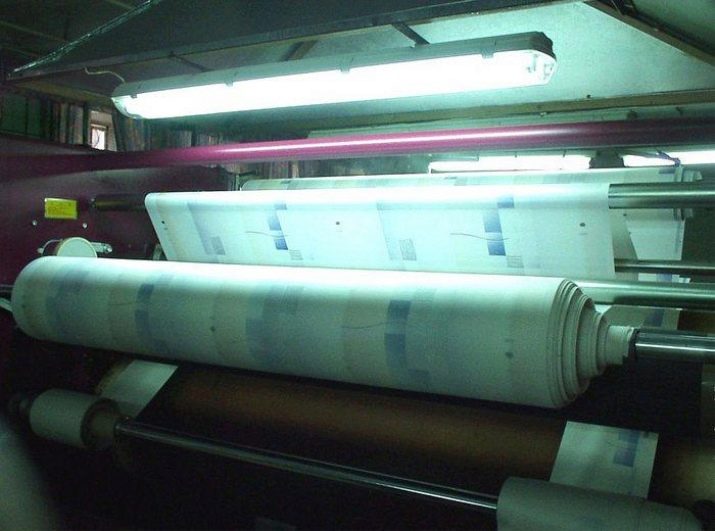
Moire has always belonged to the elite materials; it is distinguished by its spectacular appearance. However, this is far from the only advantage of the canvas - its consumer characteristics are extremely high. If initially it was a rather delicate and by no means the most durable fabric, nowadays moiré is produced resistant to friction, so things made from it have a long service life.
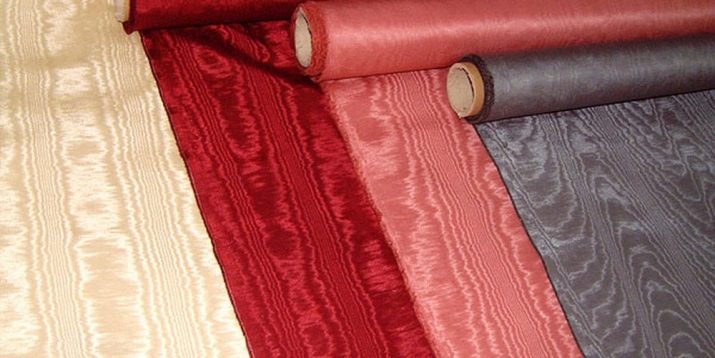
Thus, the pluses of moire include:
-
exquisite and expensive appearance;
-
silky, pleasant to the touch surface;
-
lack of tendency to deformations;
-
high strength;
-
easy drape.
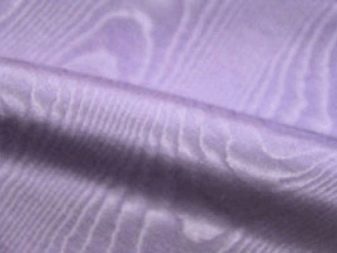
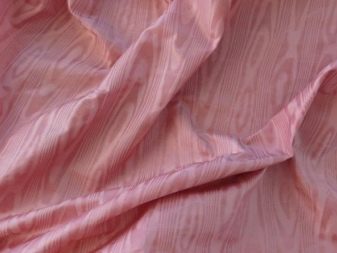
At the same time, there are also disadvantages. First of all, this is a high cost. The material is demanding in care, if mistakes are made during cleaning, ironing and storage, creases appear on the canvas, it will be quite difficult to get rid of them later.
In addition, the hygienic characteristics of the fabric, such as heat resistance, water resistance, electrification, are kept at an average level. The parameters of dust holding and air permeability are below average, while the vapor permeability is high, the hygroscopicity is 6-12%.
This is interesting: the term "moire" refers not only to the fabric and its processing technique, but also to the type of paper that is embossed on the surface. The definition has become widespread among photographers. In this context, it refers to any image that may resemble a grid or wavy stripes. As a rule, it is obtained by superimposing a pair of mesh patterns on top of each other.
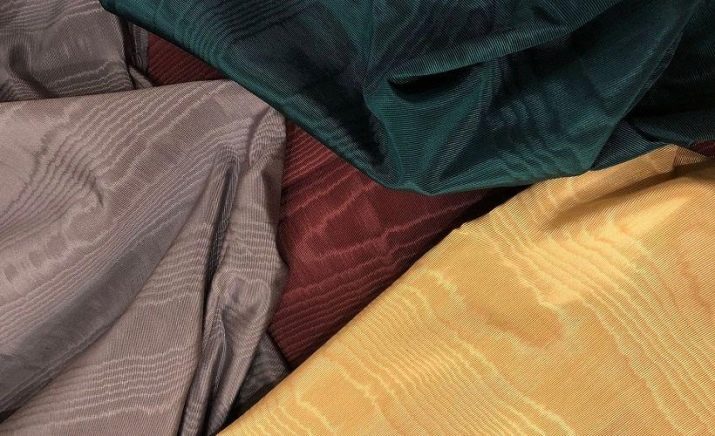
Views
There are two main types of moire fabric.
Dense thromoir - such a canvas is made of high quality silk, thanks to which unobtrusive optical prints with rich bright tints are created on the surface of the fabric. It was from such fabric that order ribbons and clothes for the courtiers of the royal court were made in former times.
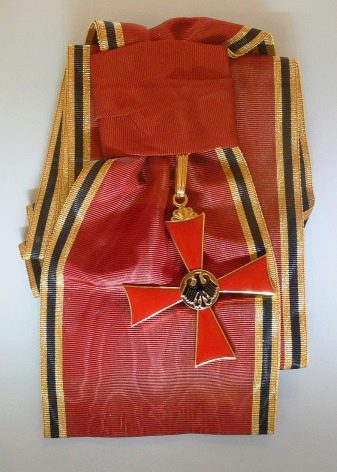
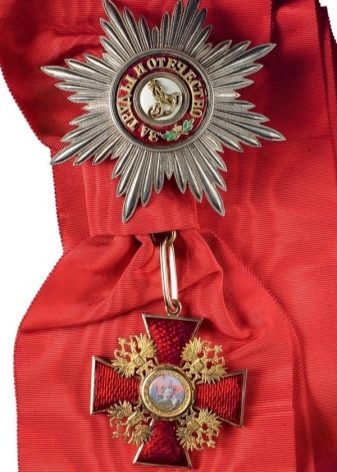
Moire-antique - a finer matter, which forms volumetric overflows. This fabric is produced by crushing the fibers with an offset. Thanks to this technique, a gradient matte overflow and a volumetric ornament are created on the surface of the fabric.
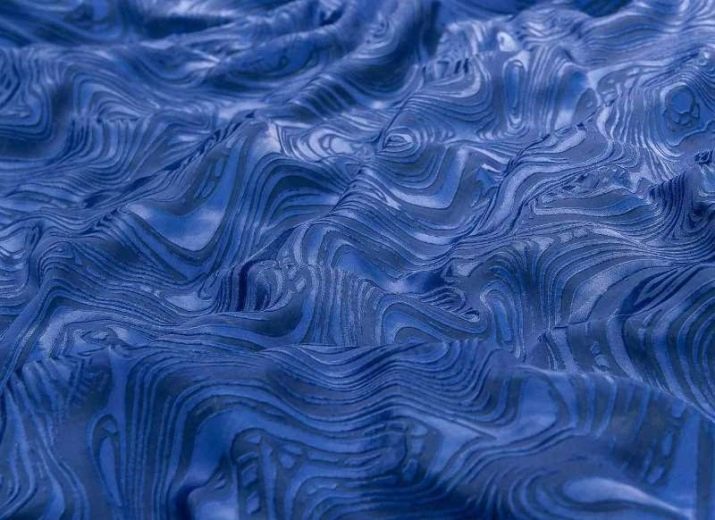
This technology is often used to create ombre transitions on the surface of the canvas from dark to light tones and to design expressive stains. The fabric is ideal for creating elegant dresses. Nowadays, it has found its application in sewing beautiful curtains that harmoniously fit into vintage interiors.
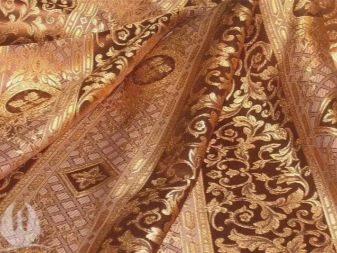

We should also mention the velvet moire fabric. Visually, this fabric is similar to ordinary moire, but according to the manufacturing technique it has absolutely nothing to do with it. Such a canvas is a material with dense fibers, the pattern here is formed by combining the pile of different lengths and colors.
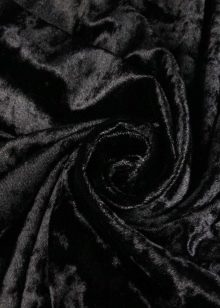
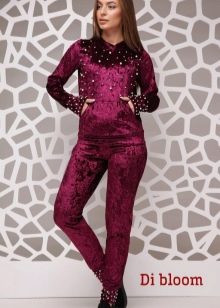
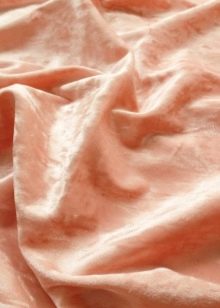
Such fabric can be printed. So, for moiré made of silk or silk with the addition of cotton, printer printing will be optimal. For synthetic modification of the canvas, preference is given to silk-screen printing and sublimation.
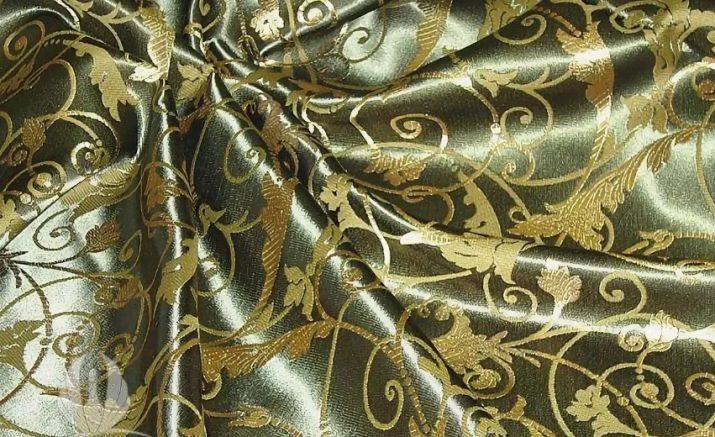
Areas of use
Despite the transience of fashion trends, for several centuries moire has been and remains one of the best fabrics for fashion clothing and elegant home textiles. It was from moire that in previous years order ribbons were sewn for Peter I, generals A. Suvorov, M. Kutuzov, General P. Bagration, and also Admiral F. Ushakov. At the same time, different moire ribbons were used for different types of awards.
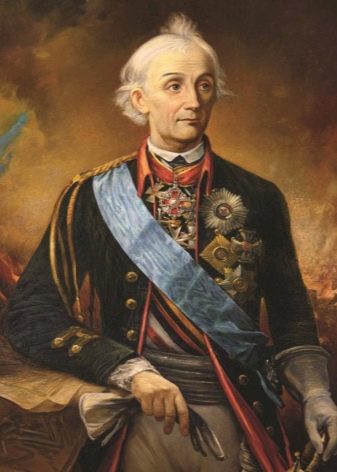
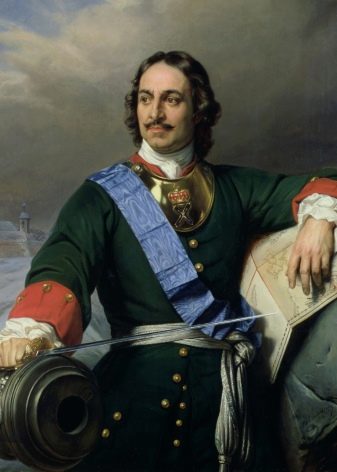
In pre-revolutionary Russia, moire was used to sew covers for ceremonial furniture. The fabric was in demand for the decoration of the premises in which the festive events were held. If you take a closer look at the canvases of the painters, it may seem that moire was present literally everywhere. Noble ladies dressed in flowing canvases were portrayed in interiors with shimmering curtains and sparkling furniture capes.
Moire has not lost its relevance even today.
Moire has an aesthetic, decoratively attractive texture, therefore it does not need prints. Typically, these fabrics are produced plain dyed in a wide variety of colors and tints. From moire, really expensive luxurious curtains are obtained, they look especially impressive with a lambrequin. However, the laconic cut models will also create an unusual play of light and stylish visual effects.

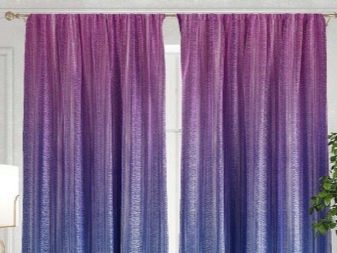
Moire is widely used in interior decoration. It is often used for wall cladding and furniture. Although it should be noted that in the latter case, the pattern undergoes constant abrasion and eventually loses its decorative effect.
Ribbons for schoolchildren are made of white fabric and wedding dresses are sewn. Colored material is used to make smart trousers and evening dresses. It is widely used for making:
-
concert outfits;
-
costumes in retro style, pop art;
-
theatrical scenery.
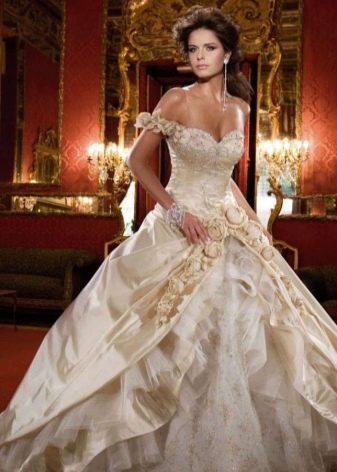
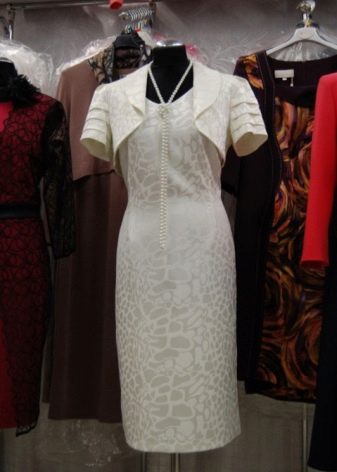
Moire is used for upholstery of elegant furniture. In addition, to this day, award ribbons are made from it.
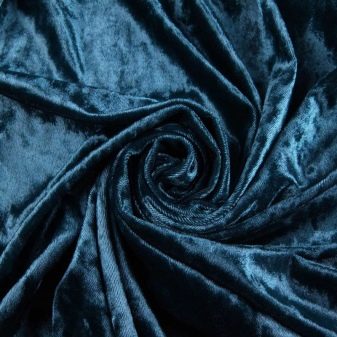

We can safely say that moire canvas is an unshakable classic that will never go out of fashion. The material goes well with fabrics such as velvet, linen and organza.
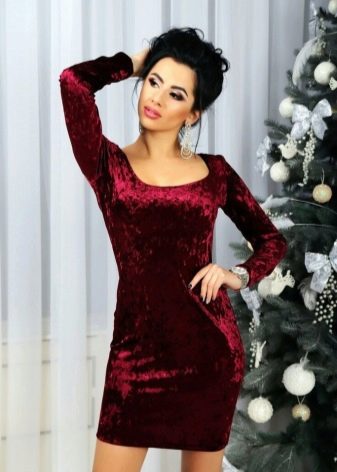
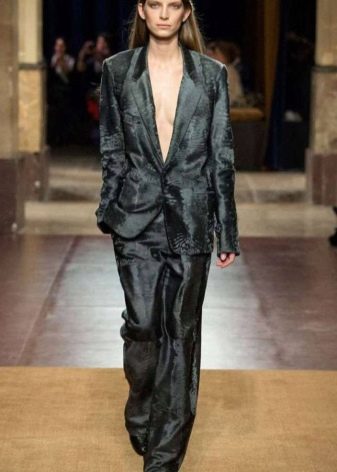
Care Tips
But taking care of this fabric is not easy. Like all expensive canvases, moire is very demanding. If the fabric is made from natural silk, it is best to entrust its cleaning to professionals. In all other cases, you need to adhere to the following recommendations.
-
When washing in a machine, you must set the delicate mode.
-
The washing temperature should not exceed 30 degrees, the time should not exceed one and a half hours.
-
Cleaning compounds must be free of chlorine and any other harsh bleach. It is better to give preference to gentle liquid products, for example, biological ones.
-
Moiré items should not be washed together with other materials. Linen of different shades must not be put into the machine.
-
Spinning is not recommended, in extreme cases it is performed at minimum speed for 10 minutes.
-
Polyester and acetate models should only be washed by hand, without rubbing or twisting.
-
Dry moiré clothes unfolded on a flat horizontal surface. In doing so, you need to keep them away from ultraviolet rays, radiators and other heat sources.
-
The ironing mode is selected taking into account the composition of the material at a temperature not exceeding 130 degrees. Iron moire clothes only from the back.
-
It is strictly not allowed to wet the moire during ironing - in this case, the water will leave noticeable untidy stains on the surface of the canvas.
-
Moiré products are prone to the formation of creases, so you need to straighten them as carefully as possible before drying. The remaining creases are carefully straightened over the steam.
-
The place for storing things made of moiré should be dark, dry and always ventilated from time to time.
-
Moiré clothes are kept hung on a hanger, home textiles are neatly folded.
-
So that over time the canvas does not become dusty, it is advisable to cover it on top with a cover for clothes.
-
In the case of heavy dirt, as well as for evening dresses with a large number of decorative elements, it is better to give preference to dry cleaning.
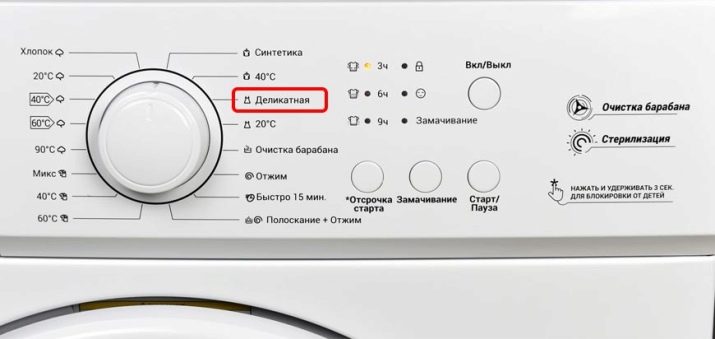
If you follow these rules, then things made of moire linen will retain their original appearance for many years.

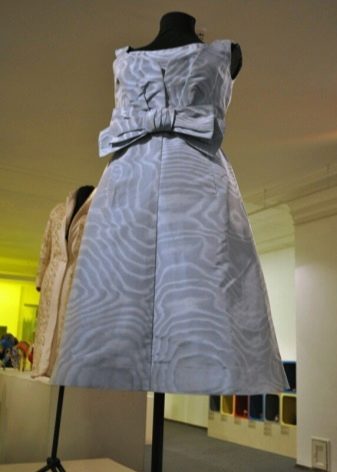
Moire is one of the most exquisite and beautiful fabrics. Its refined overflows create a special visual image and seem to fill the surrounding space with a sense of wealth, luxury and inner freedom. Therefore, in any wardrobe and in every home, it is advisable to have at least one thing from such material. Be sure that the moment when it comes in handy will certainly come.








